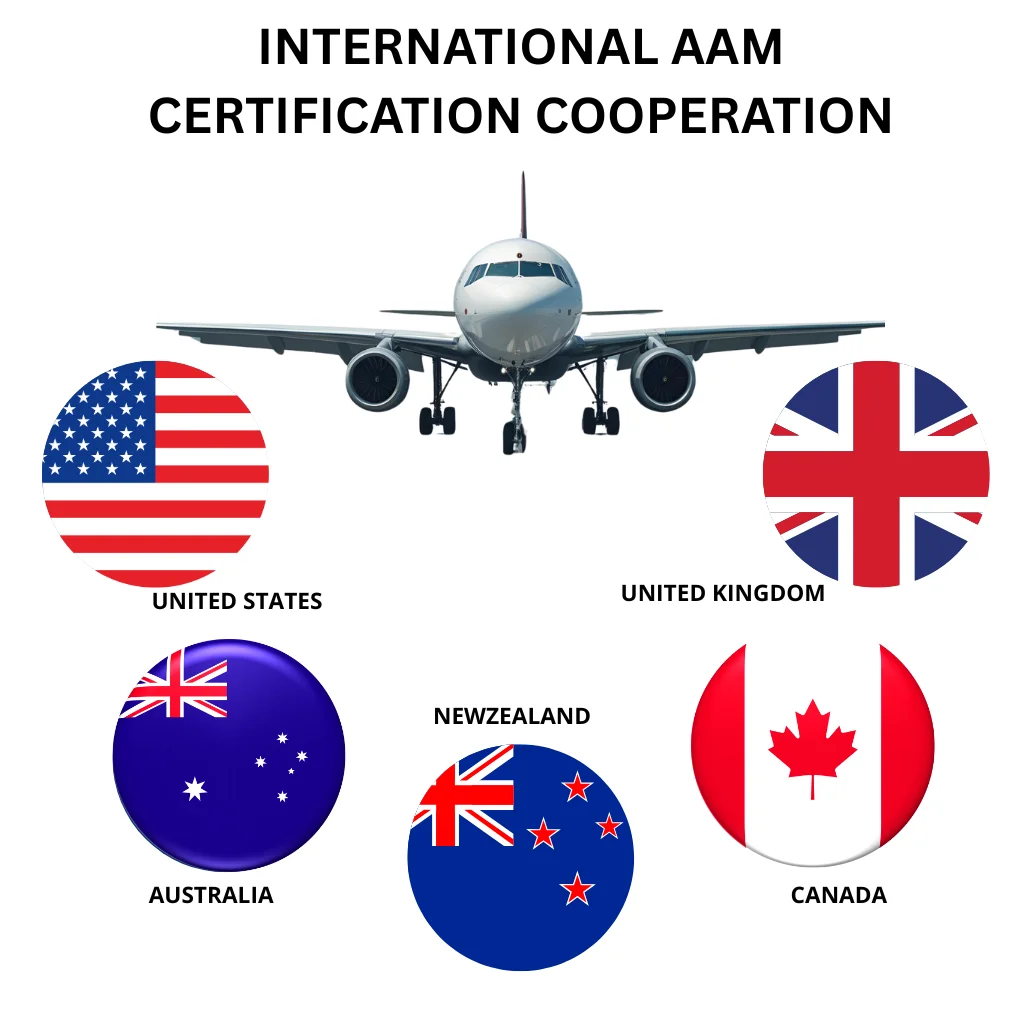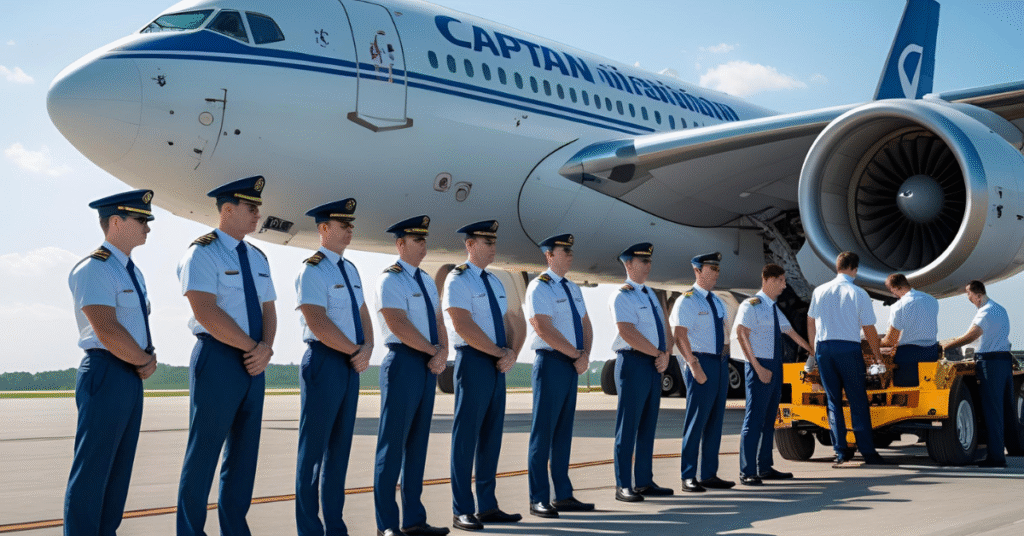The FAA and international regulators launch a unified roadmap for eVTOL international certification, paving the way for safe global air taxi operations.
At the Paris Air Show, U.S. Transportation Secretary Sean P. Duffy announced a significant development in aviation regulation. The FAA, along with regulatory bodies from Australia, Canada, New Zealand, and the U.K., established a formal roadmap for the certification of Advanced Air Mobility (AAM) aircraft.
This includes electric vertical takeoff and landing vehicles (eVTOLs), often referred to as air taxis. This collaboration aims to enhance the speed, safety, and competitive advantage in the evolving landscape of air transportation.
Why eVTOL international certification Matters: The Race Isn’t Waiting
Innovators are in a competitive race to develop solutions that cities and industries urgently need.
There is a growing demand for convenient transportation options from airports, effective ways to alleviate urban congestion, and efficient methods for delivering life-saving medical supplies.
However, as highlighted by Duffy’s caution, there are challenges to consider in this pursuit.
“If we don’t, our adversaries will fill the void,” he said, calling coordinated standards essential to ensure safe AAM rollout
This isn’t just a tech fad—it’s geo-strategic aviation competition.
What They Agreed To: AAM Roadmap Unveiled

| Regulator Partners | Collaborative Commitments |
| FAA (U.S.), CASA (AUS), TCCA (CAN), CAA (NZ), CAA (U.K.) | Shared data and research across regulators |
| Harmonized airworthiness standards | Joint certification protocols for AAM type validation |
| Declaration of Intent signed | Public commitment to roadmap principles |
FAAs Acting Administrator Chris Rocheleau underscored the urgency:
“It’s an incredibly exciting time… enabling integration of new entrants is a priority.”
Why It Affects Real People
Passengers and commuters are poised to benefit significantly from advancements in electric vertical takeoff and landing (eVTOL) technology, which promises shorter travel times and on-demand flights within congested urban areas.
Emergency services, particularly in remote or underserved regions, stand to gain access to affordable and flexible transportation options, improving response times and service availability.
However, there are substantial challenges that must be addressed. Ensuring rigorous safety certification for eVTOL operations is essential.
Additionally, local governments will need to develop the necessary infrastructure to support this new mode of transport.
It is also crucial that underserved areas, especially in the Global South, are integrated into this emerging aviation framework to avoid leaving these communities behind.
eVTOL international certification: A Pattern Emerges: Global Standardization
This development marks an important shift for AAM, which has faced challenges due to fragmented regulations in the past. With this change, AAM is now poised to navigate these complexities more effectively.
A coordinated framework offers multiple markets a unified certification path:
- Opens doors for smaller nations to adopt reliable standards from leading regulators
- Signals a trend: aviation safety is shifting from national silos to coalition-based governance
Should this initiative prove successful, it is anticipated that regulators in countries such as India, Brazil, South Africa, and Kenya will follow suit in the next phase of implementation.
Tools in Human Terms: Tech That Saves Lives
Behind the acronym AAM lies a suite of powerful tools:
- Type certification standards – ensuring every eVTOL international certification model meets performance and safety benchmarks
- Shared validation trials – enabling cross-border trust through collective data
- Unified airworthiness metrics – simplifying industry compliance, reducing testing duplication, and speeding time to market
For pilots, engineers, and emergency responders, this means fewer bureaucratic hurdles, consistent safety nets, and legitimacy in their jobs and missions.
Regional Repercussions: Where the Winds Are Blowing
The ripple effects of India’s recent aviation crackdown are extending far beyond the subcontinent, influencing the regulatory landscape across the region.
As India establishes itself as a leading authority in aviation regulation, several neighboring countries and regional players are responding swiftly to align their practices and adapt to the changes.
This not only reflects India’s growing influence in the aviation sector but also signifies a shift in how regional governments approach safety and regulatory compliance.
Airlines and regulators in adjacent nations are now closely monitoring India’s actions, with many embarking on initiatives to enhance their own regulatory frameworks and safety standards in order to maintain competitiveness and ensure passenger safety.
The overarching trend indicates a move towards greater standardization and cooperation within the aviation industry across South Asia, prompted by India’s proactive stance.

| Country/Region | Response to DGCA Directive |
| Bangladesh | CAAB has initiated a technical task force to review inspection gaps and harmonize checklists with DGCA models. |
| Sri Lanka | CAA-SL requested ICAO assistance to upgrade digital logbook protocols and enhance pre-flight checks. |
| Nepal | The Civil Aviation Authority of Nepal announced a bilateral exchange program with India for maintenance training. |
| Kenya | KCAA is exploring predictive maintenance frameworks after meeting Indian officials at the ICAO Safety Summit 2025. |
| Indonesia | Engaged DGCA India for regional consultation on AI-based airworthiness monitoring for its domestic carriers. |
“India’s system overhaul provides a credible template for emerging markets that lack deep-rooted infrastructure,” said an ICAO spokesperson in Geneva.
These developments show how India’s response is quietly reshaping aviation safety dynamics in the Global South, where air travel is expanding but regulatory frameworks often lag.
Looking Ahead: What Comes Next?
- Broader Collaboration: Adding regulators from developing nations, ensuring truly global oversight
- Industry Roadmaps: Manufacturers like Joby, Volocopter, and Lilium will align with this blueprint
- Certifications Underway: Expect first eVTOL international certification in 2026–27 — with major urban tests to follow
Final Thoughts: eVTOL international certification-A Global Flight Path Emerges
Recent developments indicate a significant shift from fragmented ambitions towards cohesive structural coordination in the Advanced Air Mobility (AAM) sector.
This signifies not just progress, but a true evolution within the industry. Regulatory authorities from five major jurisdictions have taken steps to acknowledge and oversee this new era of AAM.
This emphasizes that it is not only emerging but is also being regulated, legitimized, and aligned on a global scale.
As this coalition of regulators expands, key questions arise about the ability to operate safely and reliably while ensuring a democratic approach to air mobility.
With heightened global attention on this sector, upcoming flights are expected, though the regulatory frameworks are still in development.
This evolving landscape will shape the future of AAM as it enters a new phase of implementation and oversight.

